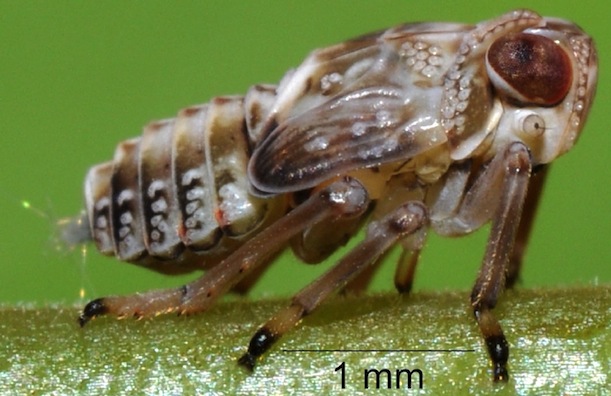Welcome to DU!
The truly grassroots left-of-center political community where regular people, not algorithms, drive the discussions and set the standards.
Join the community:
Create a free account
Support DU (and get rid of ads!):
Become a Star Member
Latest Breaking News
General Discussion
The DU Lounge
All Forums
Issue Forums
Culture Forums
Alliance Forums
Region Forums
Support Forums
Help & Search
Science
Related: About this forumThis Insect Has The Only Mechanical Gears Ever Found in Nature
The small hopping insect Issus coleoptratus uses toothed gears on its joints to precisely synchronize the kicks of its hind legs as it jumps forward

The small hopping insect Issus coleoptratus uses toothed gears (magnified above with an electron microscope) to precisely synchronize the kicks of its hind legs as it jumps forward. (All images courtesy of Malcom Burrows)
By Joseph Stromberg
SMITHSONIANMAG.COM
SEPTEMBER 12, 2013
To the best of our knowledge, the mechanical gear—evenly-sized teeth cut into two different rotating surfaces to lock them together as they turn—was invented sometime around 300 B.C.E. by Greek mechanics who lived in Alexandria. In the centuries since, the simple concept has become a keystone of modern technology, enabling all sorts of machinery and vehicles, including cars and bicycles.
As it turns out, though, a three-millimeter long hopping insect known as Issus coleoptratus beat us to this invention. Malcolm Burrows and Gregory Sutton, a pair of biologists from the University of Cambridge in the U.K., discovered that juveniles of the species have an intricate gearing system that locks their back legs together, allowing both appendages to rotate at the exact same instant, causing the tiny creatures jump forward.

Issus coleoptratus

The gears are located on the top segment of each of the insect’s hind legs
The finding, which was published today in Science, is believed to be the first functional gearing system ever discovered in nature. Insects from the Issus genus, which are commonly called “planthoppers,” are found throughout Europe and North Africa. Burrows and Sutton used electron microscopes and high-speed video capture to discover the existence of the gearing and figure out its exact function.
The reason for the gearing, they say, is coordination: To jump, both of the insect’s hind legs must push forward at the exact same time. Because they both swing laterally, if one were extended a fraction of a second earlier than the other, it’d push the insect off course to the right or left, instead of jumping straight forward.
More:
https://www.smithsonianmag.com/science-nature/this-insect-has-the-only-mechanical-gears-ever-found-in-nature-6480908/
InfoView thread info, including edit history
TrashPut this thread in your Trash Can (My DU » Trash Can)
BookmarkAdd this thread to your Bookmarks (My DU » Bookmarks)
8 replies, 5303 views
ShareGet links to this post and/or share on social media
AlertAlert this post for a rule violation
PowersThere are no powers you can use on this post
EditCannot edit other people's posts
ReplyReply to this post
EditCannot edit other people's posts
Rec (65)
ReplyReply to this post
8 replies
 = new reply since forum marked as read
Highlight:
NoneDon't highlight anything
5 newestHighlight 5 most recent replies
= new reply since forum marked as read
Highlight:
NoneDon't highlight anything
5 newestHighlight 5 most recent replies
This Insect Has The Only Mechanical Gears Ever Found in Nature (Original Post)
Judi Lynn
Jan 2020
OP
mysteryowl
(7,390 posts)1. Cool
Those bugologists find the darnedest things.
czarjak
(11,277 posts)2. Durned fancy learnin'?
Farmer-Rick
(10,170 posts)3. Neat, evolution is a smarty pants.
central scrutinizer
(11,648 posts)6. Not too smart
Forgot to patent it - missed out on millions in royalties
Karadeniz
(22,516 posts)4. Nature is awesome!❤
burrowowl
(17,641 posts)5. Far out
Nitram
(22,801 posts)7. Great article and images. Thanks for sharing!
Jim__
(14,076 posts)8. Here's a video of it.
The entire video runs 3:42, most of it is talking. But, there is a sequence of the gears meshing at about 24 seconds in, and then one of them jumping at about 38 seconds in.